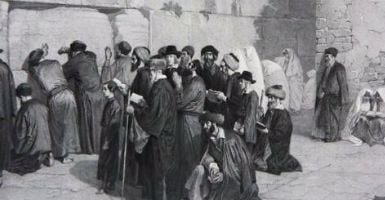Mikeitz 5781
And Pharaoh said to Yosef, “I dreamt a dream, but no one can interpret it. Now I heard said of you that you comprehend a dream to interpret it.” (Bereishis 41:15)
Parshas Mikeitz opens with the famous dreams of Pharaoh King of Mitzrayim and the wise interpretations of Yosef haTzadik. The Torah relates how Pharaoh’s eminent dream interpreters were unable to offer him a satisfactory interpretation, but Yosef, the “Na’ar Ivri”, summoned from jail, succeeded where they had not.
Many of the Mefarshim use this opportunity to examine the status of dreams in the Torah. Are dreams meaningful or nonsensical? How does somebody go about interpreting a dream? Does the outcome of the dream depend on how it is interpreted? There are number of approaches to this topic.
This subject would not be relevant to Refua were it not for the fascinating words of R’ Yitzchak Abarbanel (Bereishis 41) who asserts that dream interpretation is analogous to medical diagnosis! Based on ancient medical texts, he explains that there are two common crucial elements to both dream interpretation and medical diagnosis:
Indeed, regarding [dream] interpretation – I believe that an interpreter is like a physician who treats sickness. A physician treats illnesses that are concealed in a person’s body by means of signs that he detects from his heartbeat, urine, and other things. Likewise, a [dream] interpreter explains what was communicated to the soul of the dreamer, which is a matter that is concealed from him [the interpreter], by means of signs that he sees and hears in the relating of the dream….
There are two things a physician requires to treat a patient: Firstly, erudition – in other words, knowledge of basic [medical] concepts, humors, temperaments, and diseases. Secondly, intuition – a perspective on the individual [patient] – from the temperament of the patient, his nature, age, profession, his country of residence, his home and the timing and context of his illness. The degree of wisdom that a physician acquires in his studies and his ability to evaluate individual patients will determine the success he has in his treatment.
However, [at times in history] when the only basis for this process was a physician’s knowledge of diseases and their identification on the basis of symptoms, mistakes and errors were widespread, to the extent that [this manner of practicing medicine] felled many people. A foolish doctor, as the early sages note, is the colleague of the Angel of Death.
The same can be said of [dream] interpretation – it too is only complete when it comprises two components. Firstly, wisdom: The accomplished interpreter is familiar with visions that appear in dreams, their general meaning, the products of imagination, and with the various ways that it is presented (this wisdom was known by our forefathers…). This is found in the ninth chapter of Brachos (Daf 59), in which it states: “Somebody who dreams of such – it means…” A measure of this wisdom is delineated there.
Secondly, the interpreter must assess the dreamer: This is similar to intuition in medical treatment. Not every dream should be interpreted in the same way for every person. The interpretation offered to bandits who dream that they were hanged on a tree should not be the same as that offered to a Torah scholar who dreams the same. For each person’s interpretation follows him – according to his acts and activities…
The Abarbanel describes two aspects of medical diagnosis. The first is the use of theoretical knowledge of diseases and their various symptoms which is a part of medical knowledge. A physician who has studied the symptoms associated with a particular disease or medical condition will be able to use them to identify a patient’s condition. But this is only the first step. Physicians who rely exclusively on theoretical knowledge are likely to make many errors that may prove fatal to patients – the Abarbanel dubs them “foolish”.
Rather, they must also examine the patient as an individual. According to the Abarbanel a physician must take into account his impression of the patient’s nature and temperament. How old is he? How strong is he? What is his medical history? If he is sick, what events or circumstances preceded the onset of his illness? He must also examine his social status – what is his occupation? Where does he live? What family does he have?
This aspect of medical diagnosis, as the Abarbanel clearly states, is critically important in determining a patient’s treatment. Physicians who treat all their patients with the same method, based on a dry diagnosis that only takes into account the medical data, are at risk of drawing incorrect conclusions and not prescribing the appropriate treatments for each patient.
[The Abarbanel also explains that the same is true of dream interpretation. In that field, there is also a certain volume of theoretical knowledge which informs the interpreter how certain details of a dream indicate a particular outcome. However, the interpretation must also take the nature of the individual into account. Only then will the interpretation be correct.]At first glance, the Abarbanel’s remarks appear appropriate for the Middle Ages when medical knowledge was limited and diagnostic tools were poor. During his time, there were neither laboratory blood tests nor sophisticated imaging devices that we have today. Perhaps our modern diagnostic capabilities are sufficiently advanced such that physicians may rely exclusively on signs, symptoms, and laboratory or imaging studies and not gain an impression of a patient’s general condition and social context.
However, this is absolutely not the case. Even today, medicine recognizes the need for conducting a thorough exploration of the patient’s medical history as an integral component of the diagnostic process.
This is considered the first step in diagnosis – laboratory tests and imaging studies are only ordered after the history has been obtained. The results and data can then be assessed in context and a treatment plan can be formulated. A physician who does not perform a complete history can be considered to have acted negligently[1].
The social and personal aspects of a patient are also important in assessing his medical condition. Familiarity with a patient’s personality may help a physician distinguish between complaints about which he needn’t be overly concerned and those that are a real concern. Sometimes, referring a patient for tests may cause additional anxiety, when familiarity with his personality and history would have indicated that the patient really only needed reassurance and comforting or calming words.
Conversely, a physician may recognize that his patient tends to ignore symptoms of illness and under-report or deny them. He may need to order a full range of tests and conduct a thorough examination to ensure that his patient isn’t suffering with a certain disease – steps that he needn’t have taken for other patients.
This notion is even more important when it comes to the treatment itself. Some patients cannot tolerate treatments that other patients could. It may depend on their mental strength or physical ability to withstand challenging treatments. The deeper a physician’s familiarity with his patients, the better he can understand their medical condition and find the most appropriate treatment for each of them.
[1] This is the position of the Israeli Health Ministry – “Chozer haMinhal haKlali”, No. 6/96 – 1996.















Add comment